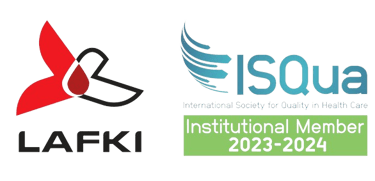Evolution of Public Service Quality: Integrating New Public Management and New Public Services Principles in Hospital Transformation
dr. Friedrich Max Rumintjap, Sp.OG(K), MARS, FISQua, FIHFAA, FRSPH


In an era of continuous development and increasing complexity of community demands, hospitals as part of the public sector are no exception in facing paradigm shifts. In the midst of the administrative revolution that gave birth to the concept of New Public Management (NPM) and its shift towards New Public Services (NPS), hospitals are required to play a central role in providing quality health services. In this context, through the integration of NPM and NPS principles, hospitals can optimize their transformation to improve service quality and increase patient satisfaction.
New Public Management: Management Revolution in Public Services
New Public Management (NPM) was born in response to the need for reform in the public sector in the late 20th century. This concept emphasizes the principles of efficient private management, such as performance measurement, accountability, decentralization, and flexibility. In the context of hospitals, the implementation of NPM creates a drive to improve operational efficiency, reduce bureaucracy, and increase accountability.
One important aspect of NPM is the emphasis on performance measurement and measurable results. Hospitals are expected to develop a clear and measurable performance measurement system, such as patient satisfaction levels, waiting times, and treatment effectiveness. By integrating management techniques such as Total Quality Management (TQM) and Six Sigma, hospitals can identify areas where improvements are needed and allocate resources more efficiently.
The concept of decentralization is also a key pillar of NPM. It creates an opportunity for hospitals to develop management models that are more responsive and flexible to local needs. For example, by giving service units the freedom to manage their own budgets and resources, hospitals can speed up decision-making processes and improve operational efficiency.
Shifting to New Public Services: Focusing on User Satisfaction and Value
Although NPM has made significant contributions to improving efficiency and accountability in public services, criticisms of the approach have emerged. One of the main criticisms of NPM is that it focuses too much on efficiency and too little on the needs and expectations of service users.
In response to these criticisms, a paradigm shift has occurred to New Public Services (NPS). NPS emphasizes the importance of prioritizing user satisfaction and value. In the context of hospitals, the NPS approach highlights the importance of paying greater attention to patient needs and preferences, and ensuring that services provided are in line with the values desired by society.
One of the core concepts of NPS is the concept of broader use of user involvement. Hospitals are expected to develop mechanisms that allow patients and the public at large to participate in the decision-making process related to the provision of health services. This can be done through participatory forums, patient satisfaction surveys, or service user committees.
In addition, NPS also emphasizes the importance of paying attention to non-financial aspects of public services, such as justice, environmental sustainability, and social welfare. Hospitals are required to not only prioritize financial gain, but also ensure that the services they provide are in line with the ethical and moral values held by society.
Integration of NPM and NPS Principles in Hospital Transformation
In facing the dynamics of change in health services, hospitals can take advantage of the benefits of both approaches, namely NPM and NPS, to achieve optimal results. Integrating NPM and NPS principles can provide a strong foundation for hospital transformation in improving service quality and increasing patient satisfaction.
One way to integrate NPM and NPS principles is to develop a user-oriented management model. This model combines elements of NPM, such as performance measurement and operational efficiency, with NPS approaches, such as user involvement and an emphasis on non-financial values. By adopting this approach, hospitals can ensure that patient needs and expectations are the primary focus in every decision and action they take.
In addition, it is also important to develop a comprehensive evaluation system to measure the hospital's performance in achieving NPM and NPS goals. This evaluation system should include performance indicators that cover qualitative aspects, such as patient satisfaction, as well as quantitative aspects, such as efficacy.


